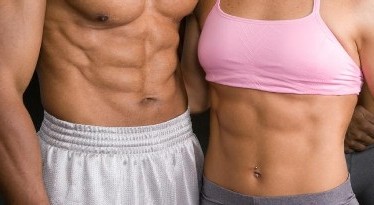Physical inactivity is the fourth leading risk factor for premature death worldwide.
Accordingly, evidence linking better cardiorespiratory fitness to improved health and longevity is overwhelming.
In fact, maintaining cardiorespiratory fitness reduces risk of chronic diseases and death more than any pharmaceutical drug.
In addition, exercise and physical fitness training is one of the most powerful anti-aging strategies there is. Exercise powerfully activates a major longevity factor called AMPK—a key regulator of energy metabolism linked to longevity.
Emerging research now shows that targeted natural interventions such as creatine, carnitine, branched chain amino acids, glutamine, and vitamin D can help maximize the health and longevity benefits of exercise.
How Much Exercise Do I Need?
The most recent report of the United States Department of Health and Human Services recommends:
- 150 minutes of moderate-intensity aerobic activity or 75 minutes of vigorous aerobic activity per week, or an equivalent combination
- Strength or resistance training at least twice per week.
It is important to engage in more than one type of exercise. Unless physical capacity is a limiting factor, everyone should engage in aerobic exercises (eg, brisk walking or cycling), strength exercises (eg, lifting weights), flexibility training, and balance exercises.
High intensity interval training (HIIT) is an approach to training that relies on short bursts of very high intensity training. While there is compelling evidence that HIIT conveys substantial fitness and health benefits, it may be too extreme for people with pre-existing health conditions. Inexperienced exercisers should consult a trainer or healthcare provider before starting a HIIT program.
Integrative Strategies for Enhancing Exercise
- Hormone Restoration for Men and Women: Studies in healthy older men have shown that hormone replacement therapy (HRT) increases exercise capacity and muscle strength. Post-menopausal women using conventional HRT had significantly greater improvements in exercise-induced insulin sensitivity than post-menopausal women not using HRT.
- More information is available in the Female Hormone Restoration and Male Hormone Restorationprotocols.
- Dietary Considerations: Consuming a carbohydrate-containing meal 4 to 6 hours before exercise ensures adequate reserves of glycogen (stored carbohydrate energy) in muscle and liver. The International Society for Sports Nutrition recommends protein and carbohydrate consumption within three hours after exercise.
- Caffeine: Studies suggest caffeine ingested before or during exercise enhances endurance exercise performance. For example, competitively trained males who ingested 5 mg/kg body weight, equivalent to 2–4 cups of coffee for a 170-pound individual, were able to lift more total weight on the chest press and generate greater anaerobic power.
- Creatine: In older adults, creatine supplementation, with or without resistance exercise, has enhanced muscle strength and mass, increased bone strength, and slowed the rate of loss of muscle mass and strength. Creatine doses used in studies typically ranged from 5–21 grams per day for a 150-pound individual.
- L-carnitine: Studies have demonstrated that supplementation with 2 grams L-carnitine can improve exercise performance and recovery.
- Branched chain amino acids (leucine, isoleucine, and valine): In a double-blind placebo-controlled study, branched chain amino acid supplementation for three days increased resistance to fatigue and enhanced fat burning for fuel during exhaustive endurance exercise.
- Vitamin D: Sufficient blood levels of vitamin D are important for musculoskeletal injury prevention and recovery, and are associated with reduced inflammation and pain, stronger muscles, and better athletic performance.
- Glutamine: In a controlled two-week trial in male college-aged martial arts athletes, supplementation with 3 grams glutamine daily for two weeks reduced muscle damage and prevented decline of immune function, including during a strenuous training period.
- https://www.pipingrock.com/?rwcode=DAS342







